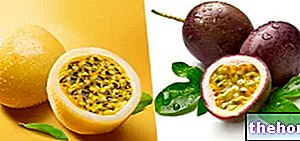Nutritional Properties
Bananas are highly energetic fruits, which contain 12-13g of simple carbohydrates per 100g of edible part: this characteristic makes them unsuitable for frequent consumption in the presence of diabetes mellitus.

The sugars contained in bananas are 83% monosaccharides or small polymers and the dietary fiber content is very low, about 1.8g. The result is a fairly high glycemic index, about 50, a value calculated on the average of species and degrees of different ripening Of course, it is plausible to say that banana consumption is oriented towards ripe fruit, which has a glycemic index closer to 70.
Diabetes
Diabetes is a chronic - degenerative dysmetabolic disease, characterized by chronic hyperglycemia and other dysfunctions of glucose, lipid and protein metabolism, which cause frequent complications. Diabetes mellitus differs in:
- Type 1 (always insulin dependent)
- Type 2 (usually, NOT insulin dependent)
In the diet therapy of type 1 diabetes, paradoxically, the food choice is less incisive on the glycemic balance; this is due to the administration of exogenous insulin, the dose of which is estimated on the meal to be consumed; therefore, the use of bananas is wriggled by some instead very important variables in type 2 diabetes. These are:
- Glycemic load
- Glycemic index
- Combination of the two factors.
In type 2 diabetes, where the circulating insulin has an endogenous origin (produced by the organism), but is functionally altered by peripheral resistance, the regulation of the quantity of simple carbohydrates and the speed with which they enter the circulation are of fundamental importance in maintaining of physiological blood glucose levels.
Fruit and Diabetes
It is true that bananas have different characteristics based on the degree of ripeness, however, in the presence of type 2 diabetes mellitus, the dietary choice of fruit must necessarily focus on low-calorie products, with a modest carbohydrate content and characterized by a share of fiber. good or at least decent food.
Without imposing the exclusive consumption of grapefruits and “Granny Smith” (green apples), the diabetic can freely choose between: plums, oranges, kiwis, apples, pears, melons, watermelons, peaches, apricots… etc.
On the contrary, they should be drastically reduced: bananas, grapes, mandarins, persimmons, figs and all highly energetic and sugary fruits. Furthermore, it would be a good idea to consume portions of fruit less than or equal to 150g and reduce the frequency of consumption to one or two pieces a day.
In case of physical activity
A final note on banana consumption and physical activity in diabetes. It is "proven and still applied" that motor therapy acts directly and indirectly in glycemic control; directly because it increases the sensitivity of muscle receptors to insulin uptake, indirectly thanks to the likely weight reduction which also determines an improvement in glycemic control.
Taking advantage of the typical anabolic window of the post exercise (proportional to the intensity and duration of the effort), even in conditions of diabetes it could be correct to use bananas. Obviously, we rely above all on the common sense of patients, as the portions must be useful for the treatment (100-150g) and the frequency of consumption should not exceed 2 bananas per week.
Bibliography:
- Sydney University "s Glycemic Index Research Service - International table of glycemic indices and glycemic loads
- Diabetes Mellitus Guidelines - European Diabetes Working Party for Older People 2001-2004 - Verona Congress 12-14 May 2005.
Other Foods - Fruits Apricots Sour cherries Cashews Pineapple Watermelon Orange Avocado Banana Persimmon Persimmons Apple Chestnuts Cedar Cherries Coconut Watermelon Dates Feijoa Fig of India Figs Strawberries Berries Passion fruit (Maracujà, Granadilla) Jujube Kiwi Raspberries Coconut milk Lemons Almond milk Mango Apples Quinces Pomegranate Melon Blackberries Mustard Medlar Olives Taggiasca Olives Fermented Papaya Pears Peaches Plantains (Cooking Bananas) Pomelo Grapefruit Pink Grapefruit Plums, prunes Fruit juices and fruit juices Grape juice Plums Grapes Sultanas and Raisins OTHER ITEMS FRUIT Categories Food Alcoholics Meat Cereals and derivatives Sweeteners Sweets Offal Fruit Dried fruit Milk and derivatives Legumes Oils and fats Fish and fishery products Salami Spices Vegetables Health recipes Appetizers Bread, Pizza and Brioche First courses Second courses Vegetables and Salads Sweets and Desserts Ice cream and sorbets Syrups, liqueurs and grappas Prepare Basic tions ---- In the kitchen with leftovers Carnival recipes Christmas recipes Light diet recipes Women's, mom's and dad's day recipes Functional recipes International recipes Easter recipes Gluten-free recipes Diabetic recipes Holiday recipes Valentine's Day recipes Vegetarians Protein recipes Regional recipes Vegan recipes




























